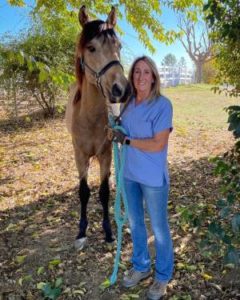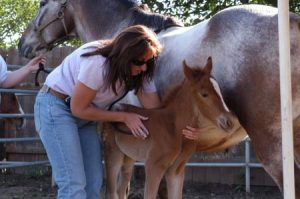+1 619-659-1180

PREVENTIVE EYE CARE

Your horse may have had an eye problem or, because of skin coloring, may be more prone to develop eye problems. The following may significantly help your horse if made a routine part of your management.
Continually evaluate potential sources of eye trauma and irritation in your horse’s environment.
- Never use a whip or otherwise strike your horse around the face.
- Eliminate protruding sharp objects in stalls and around the barn.
- Avoid feeding hay at eye level. Hay stems could poke your horse in the eye and hay particles can irritate the eyes.
- Watch for brush and branches at eye level on trail rides and in areas where your horse is turned out.
Reduce insect contact with your horse’s eyes.
- Regularly clean your horse’s eyes and the area around the eyes to minimize insect attraction.
- Use a clean fly mask. It should be adjusted and/ or changed daily.
- Make a browband with multiple 8-inch-Iong leather strings attached so they sweep across the eye area to remove flies during riding or turnout.
- Keep horses confined and consider stall screening during times of heavy fly population.
- Regularly apply an insect repellent to your horse’s head area.
- Keep sensitive horses, such as those that are prone to eye problems or those that are white skinned, out of direct sunlight.
Early Signs of Eye Problems
- Lid swelling and redness
- Tearing
- Increased blinking
- Corneal haziness or cloudiness
The Following Warrant and Emergency Call
- Reluctance to open the eye.
- Obvious pain when you touch the closed eye in an attempt to open it.
- A cloudy cornea (whitish-blue color).
- Discharge of blood or pus from the eye.
- Eye wound or laceration.

















